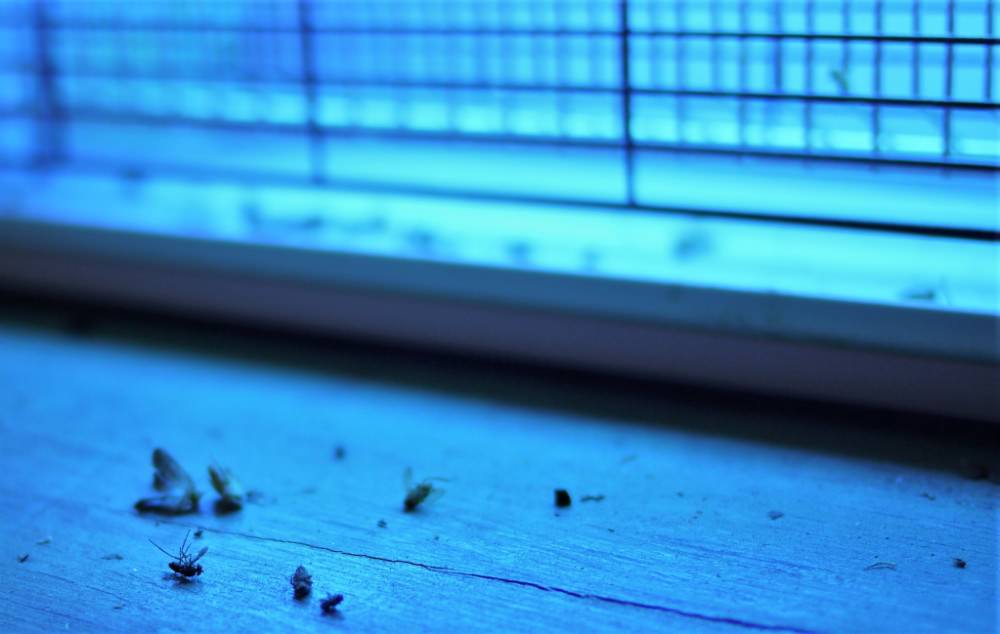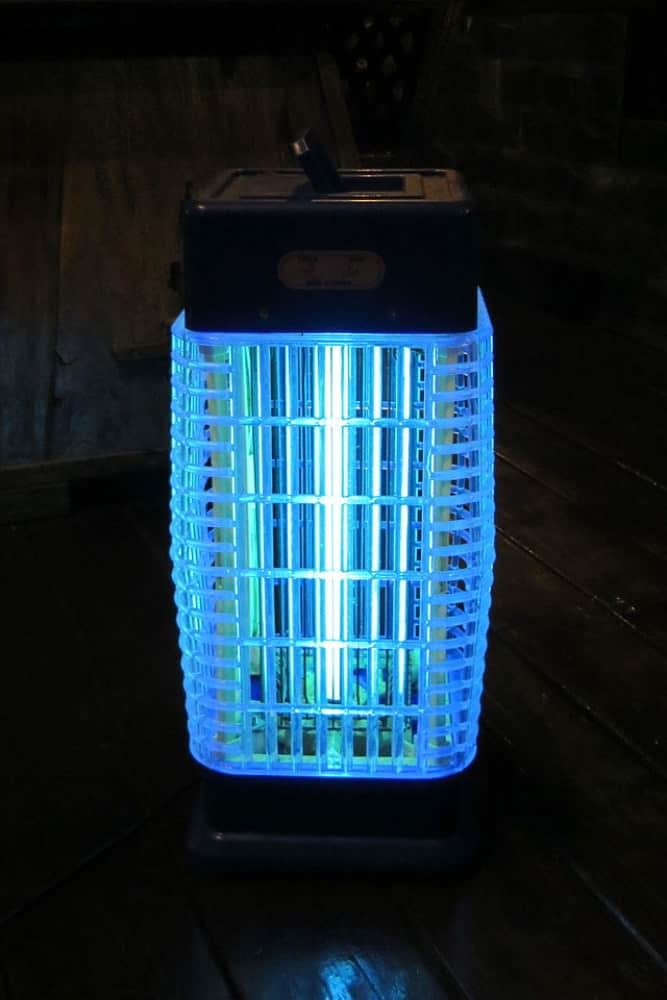Best Mosquito Zappers
Mosquitoes and other insects can be very annoying, especially in and around the home. With so many potential risks and dangers involved with chemical pesticides, it can be difficult to solve this problem safely. If you are looking for a safe and chemical free method, a mosquito zapper is the perfect option.
How do Mosquito Zappers Work?
Zappers a great mosquito killers. Many of these electronic devices can be used both indoor traps, and outdoors, effectively and safely getting rid of mosquitoes. This form of pest control kills mosquitoes without exposing you to any dangerous chemicals from bug sprays or repellents. We will look in more detail to find out how they work, some of the best buys, and the most effective way to use them.
Mosquito zappers kill mosquitoes by electrocuting them. Most of these devices feature a bright light that entices the mosquitoes. Typically, these machines work by first luring the mosquito with the light. They are then electrocuted as they try to reach the light.
Mosquitoes, along with many other bugs, are naturally attracted to light. This behavior is called positive phototaxis and is what makes this trap so effective. However, mosquitoes do not always have a positive response and attraction to light.
Male mosquitoes do not feed on blood at all, it is only the females who bite. The female requires blood in order to reproduce. She needs to feed from a blood host before producing each batch of eggs.
If a female mosquito is searching for a host and looking to feed, she is more likely to have a positive attraction to light. Yet, if she has already fed and has enough blood, she will most likely avoid any kind of light. That is not always a bad thing, as the zapper will still be attracting those mosquitoes that are more likely to be interested in biting you.
A mosquito zapper has a basic electrical circuit set up. There is a flow of voltage running through the metal mesh of the zapper. Mosquitoes will try to fly past this mesh on their way to the light, and will get electrocuted in the process.

Zappers get their name because of the sound that is made when the mosquito comes into contact with the electrical voltage. As they work by using electricity, they obviously need some sort of power source. The type of source can vary, depending on the model or type of zapper.
Some zappers are powered by battery, while others need to be plugged into a mains source to work. This is something to consider when it comes to choosing the best mosquito zapper for your needs. Battery powered zappers may be more practical in open areas, such as backyards, where there is no access to electrical sockets.
Different Kinds of Mosquito Zappers
Horizontal
Horizontal mosquito or bug zappers are large box-shaped units, designed and suitable for use both indoors and outdoors. UV light bulbs run horizontally in the center of the device and are housed in a mesh metal grid. This grid will have an electric current running through it, to zap any insects flying into the device towards the light.
There are many different models and designs of this type of zapper on the market. The most effective have a grid of 2000 volts or more. The vast majority of these devices will also come with an extra outer housing, for safety purposes.
Vertical
Vertical bug zappers are very much like horizontal bug zappers in design. The main difference is the direction in which the light bulb is positioned. Vertical mosquito zappers feature a vertically running UV strip bulb in the center.
This bulb is again surrounded by a live metal mesh, ready to electrocute any curious bugs flying towards the light. A plastic housing is typically found on the outside to provide extra safety against any electrocution or injury. This type of mosquito zapper is also safe for use both indoors and outdoors.
One of the advantages of this style of zapping device is its aesthetic appeal. Due to the vertical placement of the light inside, many are designed to look very similar to lanterns. The sleek and attractive designs make them perfect for users who are more style conscious.
Zapping Bulbs
These devices are designed to fit into standard wall sockets and have bug-zapping components built in. However, they cannot be used in all locations as they do not have the same housing and protection as horizontal or vertical mosquito zappers. This makes them unsuitable for use in outdoor plug sockets that are likely to be exposed to water. In addition, these appliances should not be used within reach of children or pets.
However, a zapping bulb can well in a sheltered outdoor location with dry conditions, for example on a porch. They are not as powerful, though, and do not give off the same amount of light as horizontal or vertical zappers. They only offer a certain amount of bug protection, but can still be efficient within a smaller radius.
Electronic Repellent
These kinds of device will not zap and kill mosquitoes and bugs, but they do use electricity to keep the pests at bay. Electronic repellent devices are intended for use indoors or outdoors, and work by plugging into a wall socket.
Their function is to deter mosquitoes, along with other pests, including mice, by emitting a high-frequency sound. This noise is inaudible to humans. However, pets may be affected by the sound, as well as the bugs you are trying to repel.
However, as this kind of device will only deter the pests, it may not be the best option for you. If you have a serious problem at home and are looking to kill mosquitoes, choose one of the other types for more effective use.
By emitting the high-frequency sound, these plugs can help to keep mosquitoes away from your home. They only work within a limited range, though, and this range is easily blocked by furniture or other solid objects. Remember to keep the device away from any water as this will cause damage.
Best Mosquito Zappers
If you are not sure which of these devices is best for you, here are some available options. All the mosquito zappers mentioned below are designed for use indoors. We have included both horizontal and vertical devices.
LiBa Bug Zapper
With a massive 2800V grid and emitting a 356 nm wavelength, this is a powerful and effective horizontal mosquito zapper. Complete with safe cage wiring, any accidental contact—either from pets or people—is not a major concern. There is little to no risk of injury, although tiny fingers may be able to poke through the cage.
LiBa’s bug zapper features a wire chain, making it easy to hang anywhere within your house. The base tray is also easy to remove and clean out, so device maintenance is also a breeze. This device is not suitable for outdoor use.
The LiBa measures 15.6 inches by 12.2 inches by 3.8 inches and weighs 3.95 pounds. The product includes two spare replacement bulbs, leaving you set for about a year of coverage. Some customer reviews mention that the bulbs tend to last about six months, and that they are easy to change when needed.
Some users have, however, reported experiencing minor electric shocks when cleaning this device or changing a bulb. With that in mind, always remember to unplug any kind of electrical equipment before touching, cleaning or bulb changing.
A final great feature of this particular zapper is its warranty policy. This device comes with three years of warranty cover from the manufacturer. In addition to that, you are entitled to a full refund within the first 90 days of purchase, if you are unhappy with your LiBa bug zapper.
Fomei Bug Zapper
Fomei’s Bug Zapper delivers a 356 nm wavelength light catalyst. This makes it very attractive to many flying insects, including mosquitoes. Measuring just 10.2 inches by 4.5 inches by 4.5 inches, this device is also quite compact, in comparison to other mosquito zappers on the market. It weighs only 14.25 ounces and uses just 6 watts of power.
Featuring a sleek and black, lantern-like design, the vertical zapper can be installed easily around the house with a hook on the top. One of the outstanding features of this particular device is the sound reduction technology. This zapper is designed to be ultra quiet when killing insects.
This reduced noise makes the Fomei great for open living spaces, as well as bedrooms. Users will be protected from flying bugs for long periods of time with this device, as the bulb can last up to two years before changing.
Maintaining this zapper is also simple. It features a removable base tray that is easy to access and clean out. This tray must be emptied on a regular basis to ensure the best performance from your mosquito zapper.
Vivreal Bug Zapper
With its sleek and modern design, the Vivreal bug zapper will make a seamless addition to any home. When in use, it functions within the optimal mosquito wave band of around 400 nm. This horizontal zapper can be used freestanding on any level surface. It also includes a hanging chain if you wish to install it on a wall or suspend it from the ceiling.
If you opt to set it up inside your home, the zapper has been designed for optimal safety to prevent any injuries. Vivreal’s zapper comes complete with a 6mm wide outer safety mesh. If any accidental contact is made by pets, adults or small children there is maximum protection with minimal risk of injury.
This device boasts 538 square feet of coverage. This is quite a bold claim to make. However, customer reviews have reflected that this device is really effective at keeping the bugs at bay within their homes.
When it comes to maintaining the Vivreal, its easily removable base tray makes cleaning simple and quick. The zapper weighs 3.75 pounds and measures 14.5 inches by 3.8 inches by 11 inches.
Positive customer reviews have reflected the effectiveness of this device, however, it may not be suitable for every room in the house. This bug zapper features a very bright light. According to some user comments, this makes it unsuitable for using in the bedroom overnight.
Finally, the Vivreal mosquito zapper comes with ample warranty coverage. Users can enjoy three years of cover included in their purchase. Vivreal also offer great customer support for any problems or queries you may have regarding your mosquito zapper.
How to Use Mosquito Zappers Effectively
Some mosquito zappers can be used both indoors and outdoors. However, if you opt to use a mosquito zapper indoors and it is visible from outside, you may end up attracting more than you repel. Bugs will zone in on the light source and be encouraged to come in and feed on you.
You, as a food source, can sometimes be more attractive than the light lure in the zapper. So with that in mind, it is best not to rely solely on zappers in your house for long periods of time.
The best and most effective time to use your zapper is during the times of day where mosquitoes are most active. This is early morning, early evening and through the night when they come out to feed, which is a great opportunity to lure them in, and get rid of them for good.
Tempting as it may be, it is not effective to keep your zapper on 24/7. It will only waste the bulb’s life and electricity. For optimal usage, use your zapper through the night, as in darkness the light will stand out more. If mosquitoes can see the light more clearly, then it will work much better as visual bait for them.
Finally, make sure to regularly clear out any dead insects from the base tray. Daily cleaning is best to make the most out of your zapper and improve its efficiency.
Risks & Precautions
While zappers do use electricity to kill mosquitoes, they are not usually dangerous. So long as users ensure they are not careless while using it, and follow user instructions, there is little risk of any real danger. These products have been designed to be as safe as possible for users.
The electrified mesh grid is housed inside a protective frame, or cage, saving users from the risk of electrocution. This housing is usually made of plastic or a non-conductive metal. That said, however, do be careful when setting up, using and cleaning out your mosquito zapper. As well as switching off, be sure to detach it from the power source before cleaning out the base tray or replacing a bulb.

When setting up a mosquito zapper in your home be careful to consider its location. Ensure it is placed where it cannot be accidentally knocked over. Additionally, do not place this kind of device near any running water sources—electricity and water is never a good mix.
Only use a mosquito zapper outdoors if you feel you have a real problem with insects. Remember that these devices do not just kill mosquitoes, they attract and kill a variety of other bugs too. This is great news if you are also bothered by flies or gnats, etc. But excessive and unnecessary use can lead to you killing other, more beneficial insects. These creatures are an important part of the surrounding ecosystem and food chains.
Given a zapper’s attraction properties, you could be attracting more mosquitoes than you might naturally have in your home or garden. Overuse of a mosquito zapper could result in your mosquito problem getting worse, not better. Also screening your home to avoid more bugs inside, will make a huge difference to this device’s effectiveness.
When a mosquito or insect is killed by one of these devices, they are zapped into a fine mist. This mist contains minuscule parts of that insect, along with bacteria and, potentially, any viruses they were carrying. Due to the force at which these devices electrocute insects, in some cases, the mist can spread up to seven feet away from the device.
The bottom line is, you could be filling your home with contaminated air. It is important that these devices are set up and used in more open areas of your house. Avoid any areas where you will be preparing, cooking or eating food. I do not recommend that you set one up near to shelves, countertops or cookers in the kitchen, for example.
If you have young children at home, be careful to consider their health and safety too. Do not set up a mosquito-zapping device over, or near, areas where they play or rest. Setting up a device away from these places, and out of their reach, will also prevent any little fingers from accidentally, or curiously, touching the device.
While there is limited risk of electrocution with mosquito zappers, they still run a live electric current through them. Never leave children unattended with a mosquito zapper in reach. Even if your device has a safety mesh secured on the outside that fingers can’t penetrate, objects could still be poked inside, conducting electricity out.
Finally, consider other ways to protect your home from mosquitoes as well as using a mosquito zapper. Install mosquito nets at your doors and windows to help keep the insects out of your home. Also, check in and around the home for any small pools or fresh water where mosquitoes may breed and lay eggs.


